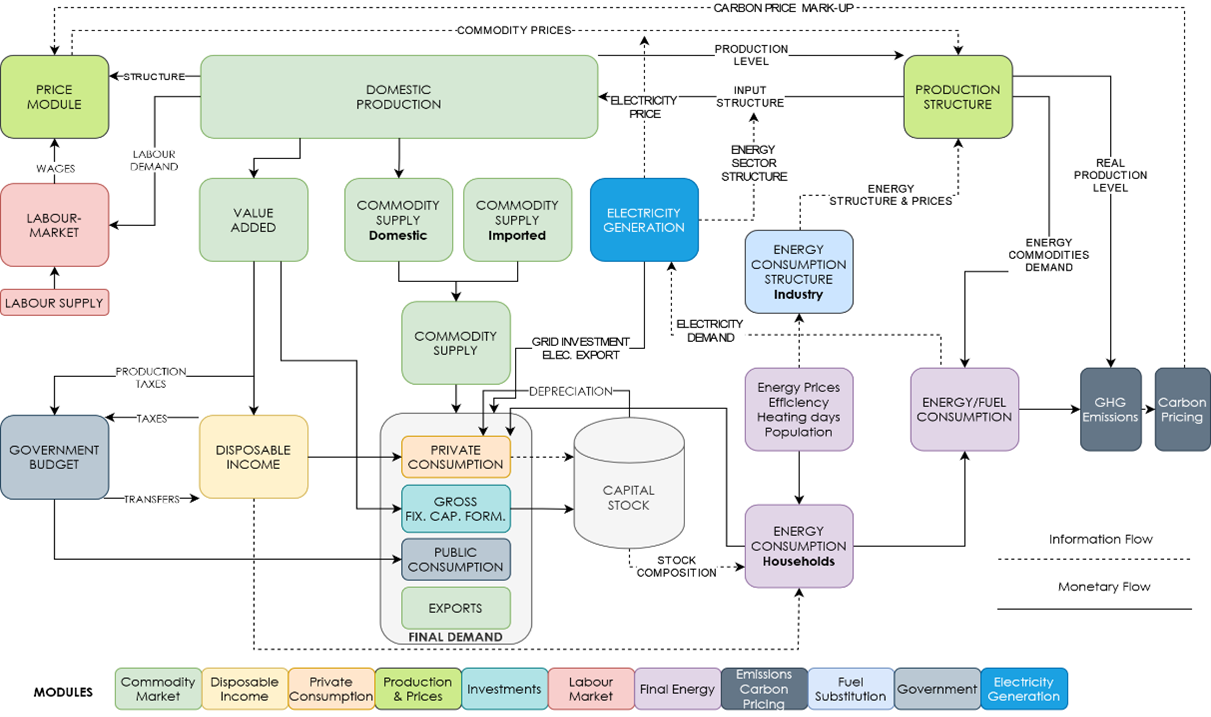Work Package 5: Macroeconomic modelling
Description
The analyses of the effects of the prosumer scenarios (i.e. scenario parameters defined in WP2 and results from the technology diffusion model in WP4) on macroeconomy, distribution, emissions and final energy demand are conducted in WP5 with the DYNK (Dynamic New Keynesian) model (Kirchner et al., 2019; Sommer and Kratena, 2017). DYNK is a macroeconomic model with input-output linkages covering the economic interdependencies between multiple sectors in a single region and that integrates a set of eleven intertwined module blocks. The DYNK model has been applied in a variety of projects to simulate energy and emission scenarios as well as to evaluate climate policies such as CO2 taxation, circular economy measures or investments in renewable energy. A central feature of DYNK is the ability to implement soft links with technical bottom-up models that, for instance, focus on mobility, residential heating and electricity generation, respectively.
The DYNK model describes the interlinkages between 74 NACE4 industries, 74 CPA commodities as well as the consumption of five household income groups (quintiles) by 47 consumption categories (COICOP) in the Austrian economy. It is a hybrid between an econometric input-output (IO) model and a Computable General Equilibrium (CGE) model. The energy block of DYNK derives physical energy demand of industries from their energy commodity input in real terms while energy consumption of private households is calculated in the form of econometrically estimated service energy demand equations. CO2 emissions caused by energetic use (combustion) are obtained by using emission coefficients and energy consumption. Sectoral process emissions are linked to sectoral real production levels.
For analysing the effects of household PV adoption, the household sector in DYNK will be split up into different household groups which are defined based on WP3 and WP4. Amongst other aspects the groups will be differentiated by income to study the distributive impacts of the transformation. The household module in DYNK is complemented by the results of the technology diffusion model (WP4) which determines the investment expenditures of different household groups for PV systems and batteries. Furthermore, developments of electricity generation prices, system costs and support are provided by the findings in WP2. The possible indirect impacts of the available PV-electricity will be analysed in sensitivity scenarios. This analysis will draw from a literature review on the potential contribution of electricity from residential PV systems for providing electricity for heating and e-vehicles. Both aspects increase the own-use-rate of electricity, thereby affecting household income, and might reduce emissions.
Figure: Schematic Structure of the DYNK Model




